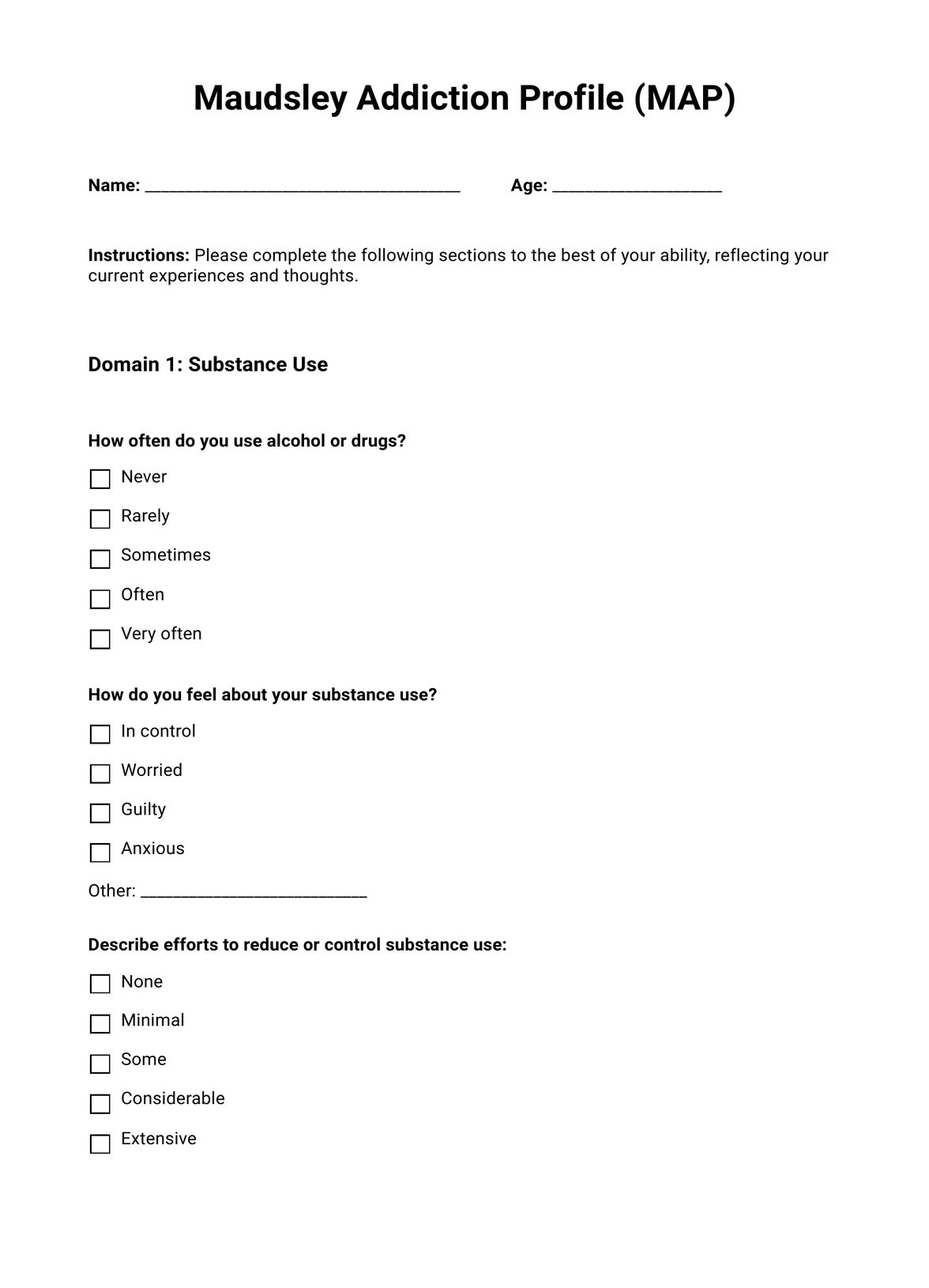Completing the Maudsley Addiction Profile (MAP) typically takes around 15 minutes. This concise yet comprehensive assessment efficiently evaluates various dimensions of substance use and its impact on an individual's life.

Maudsley Addiction Profile (MAP)
Learn about the Maudsley Addiction Profile (MAP) – its benefits, usage, interpretation, and more—guide to effective assessment and treatment.
Maudsley Addiction Profile (MAP) Template
Commonly asked questions
The Maudsley Addiction Profile (MAP) findings provide insights into an individual's substance use patterns, health risks, physical and psychological well-being, and personal and social functioning. Healthcare professionals interpret these findings to assess the person's progress, identify areas requiring additional support, and tailor effective treatment strategies.
The Maudsley Addiction Profile (MAP) is used at multiple stages of the treatment process, such as at intake, during treatment, at discharge, and during follow-ups.
EHR and practice management software
Get started for free
*No credit card required
Free
$0/usd
Unlimited clients
Telehealth
1GB of storage
Client portal text
Automated billing and online payments











